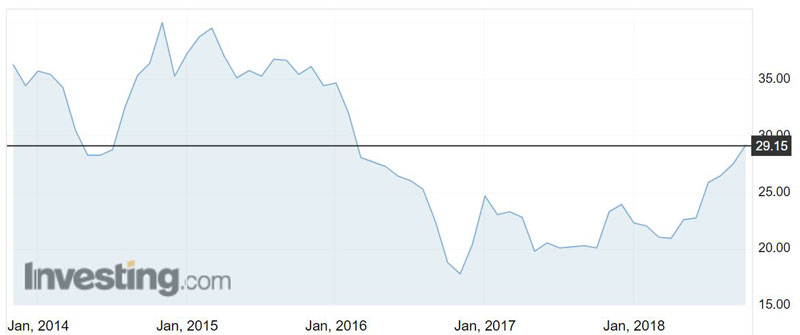Paladin looking at vanadium production as part of uranium mine restart decision
Mining
Mining
Uranium miner Paladin could improve the profitability of its mothballed Langer Heinrich mine in Namibia by producing vanadium as a by-product.
The uranium price is currently on an upwards trajectory and is close to hitting $US30 ($41.29) per pound — its highest point in over two and a half years.
Vanadium prices are also booming at around $US36.50 per pound — up from about $US5/lb in 2017.
Paladin (ASX:PDN) placed Langer Heinrich on care and maintenance (C&M) in May 2018 due to the sustained low uranium spot price.
During C&M, production is stopped but the operation is ‘maintained’ in case there is potential to restart operations at a later time.
Paladin told investors that a prefeasibility study examining mining and processing improvements — as well as recovery of vanadium as a by-product — at its large Langer Henrich mine would be completed next year.
The company warned that a restart decision was still dependent upon a sustained uranium price recovery.
In September, Paladin told investors that C&M supply can generally come back online if prices lift to the $US40 to $US60/lb range.
“We want to position Langer Heinrich to be among the first significant global producers to return to production once the uranium price recovers to acceptable and sustainable levels, which it is moving towards currently,” Paladin chief executive Scott Sullivan said.

Price turnaround
The uranium price bombed heavily in 2011 from over $US70 per pound after the Fukushima Daiichi nuclear disaster forced Japan to shut down its entire reactor fleet.
But several factors have now contributed to the price turnaround, not least of which was Canadian uranium heavyweight Cameco’s decision to mothball its McArthur River mine — the world’s largest uranium operation.
The move cut 11 per cent of global supply from the market.
That news came not long after Paladin halted production at its Langer Heinrich mine in Namibia.
About 36.5 million pounds of uranium has been taken out of the market since 2016 — the McArthur River closure alone removed 18 million pounds.